What is the Difference Between Overnight HealthCare and 24 Hour Live-in Care?
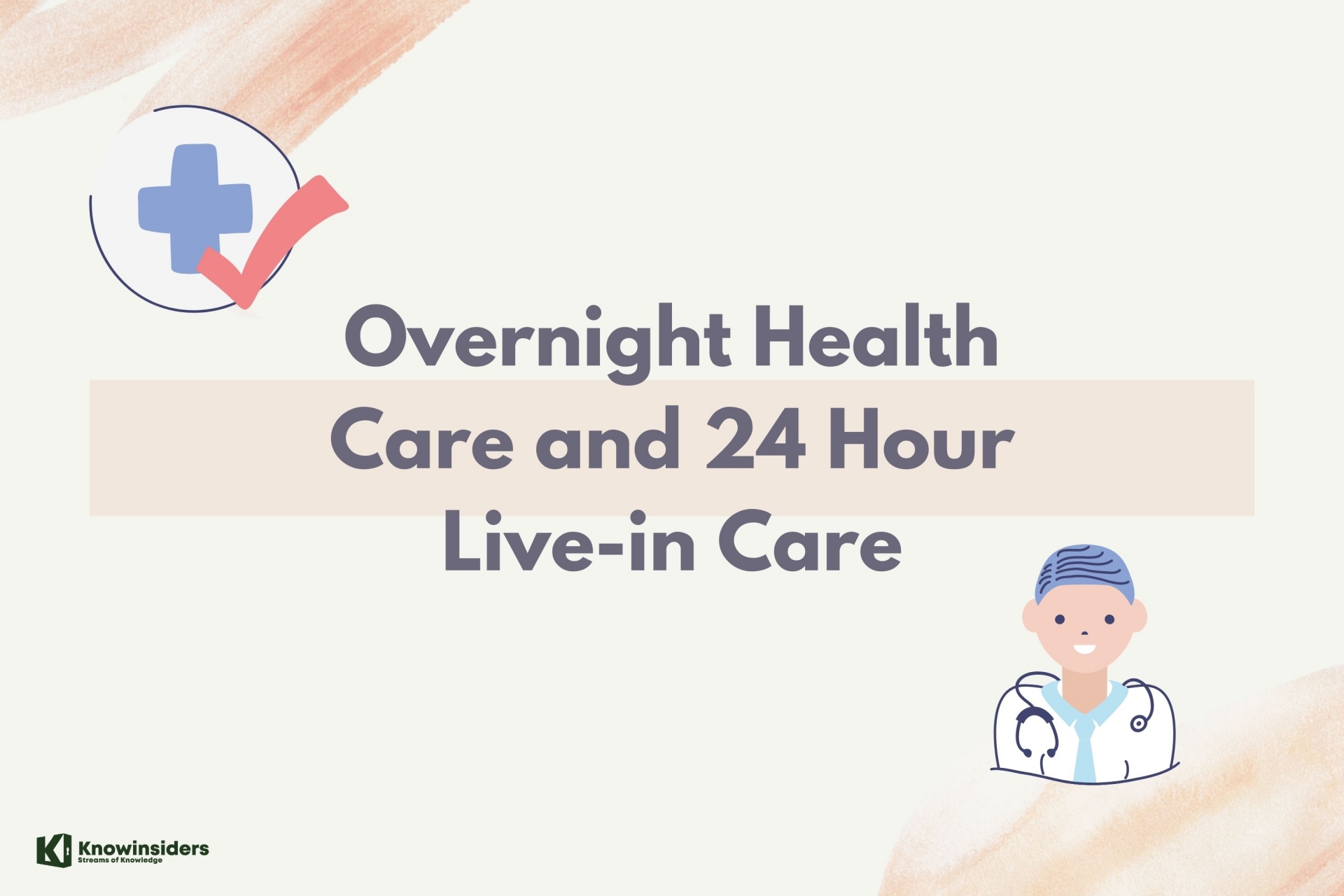 |
| Photo: KnowInsiders |
When organizing around-the-clock care, you have the option of choosing either 24-hour home care or live-in care. Both services are great alternatives to assisted living as they allow clients to receive 24/7 care from caregivers while allowing them to stay in the comfort of their own homes.
But how do you know which is the best option for you? We discuss the differences between the two services to give you more insight into which option is more suited for you or your loved one.
What is Overnight Health Care?
Overnight care is about knowing someone is there to help if a loved one needs fluids, snacks, or help using the restroom. It’s perfect for people who have trouble sleeping through the night or tend to wake up disoriented.
With overnight care, a caregiver comes by the house to provide a few hours of care before bed and in the morning, yet remains at the house throughout that period. In addition to providing homemaking and companionship services, overnight caregivers can provide several personal care services, including:
• Bathing
• Dressing
• Haircare
• Oral care
• Nail care
• Grooming
• Skincare
• General hygiene
• Perineal care
• Changing adult briefs
• Repositioning if bed-bound
• Supporting physical therapy exercise
• Restroom assistance
What Is Live-In Care?
Needing more support doesn’t have to mean leaving home. You might be helping mom or dad in their home and things have reached a point where they need more constant assistance. Or maybe you or a family member are having surgery and would rather recover at home. Live-in home care means that a caregiver lives in your home, either longer-term or for a short period, to help with anything from spontaneous needs to planned outings.
If you are a family caregiver, you know that a poor night’s rest can affect your health. Live-in caregivers are entitled to 8 hours of sleep, so if the needs are too great to accommodate sleep, you might choose traditional 24-hour care (around-the-clock care) so there is a caregiver awake at all times. This 24-hour traditional care means that several caregivers rotate shifts (typically 8 hours at a time) so that someone is always awake and alert to help your loved one.
Although live-in care and 24 hour home care may differ slightly depending on your location, here’s what you can expect when you compare the advantages and disadvantages of both options.
| Live-In Care | 24 Hour home Care | |
|---|---|---|
| Number of caregivers per day | 1 caregiver | Minimum 2 caregivers* |
| Hours per day a caregiver works | 24 hours | 8 or 12 hours per caregiver* |
| Sleeping break | 8 hours | Optional — decided by you |
| Cost | Flat rate per day 4 hour break coverage (Billed hourly) | Hourly rate per day 12 hour overnight (Billed hourly if caregiver remains awake; flat rate if caregiver can sleep) |
Overnight Health Care — Biden lays out omicron playbook
President Biden outlined his plan to fight omicron, seeking to balance reassuring the vaccinated with stark warnings to those who choose not to get inoculated.
During remarks at the White House, Biden outlined a plan to increase testing, speed up the vaccination campaign and boost the capacity of hospitals that could be inundated in the coming weeks. He made it clear that although infections are rising, the nation is in a far different place than it was last year.
“We should all be concerned about omicron, but not panicked,” Biden said, emphasizing that vaccinated individuals, especially those with a booster shot, are “highly protected” against the virus.
But he also acknowledged that many will still get infected with relatively mild symptoms, and people should expect cases to rise.
"We'll see some vaccinated people get COVID, potentially large numbers," Biden said.
The plan: Biden announced that the U.S. will stand up new federal testing sites around the country, helping states that need additional testing capacity. The first will be set up in New York City this week.
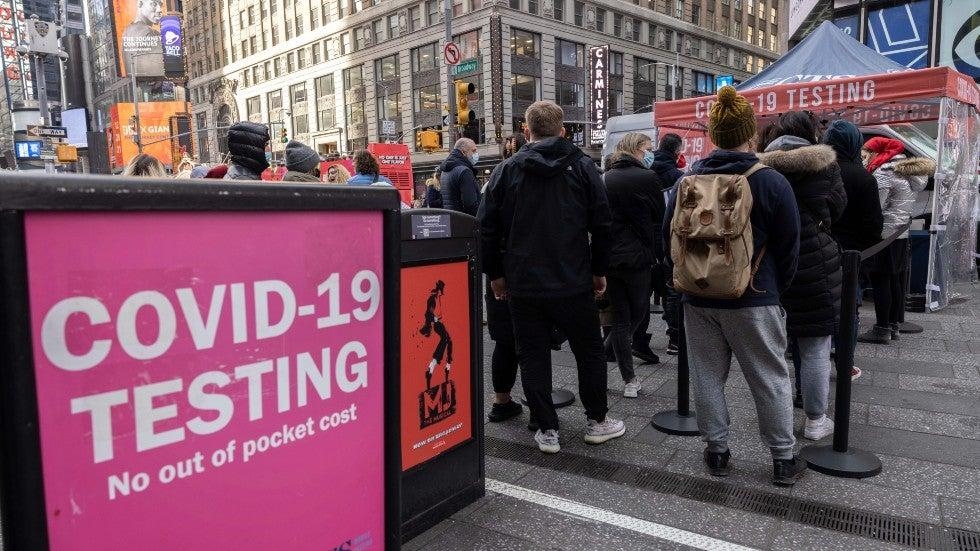 |
| People wait in line to get tested for COVID-19 at a mobile testing site in Times Square. Photo: The Hill |
He also announced that the administration plans to purchase 500 million rapid COVID-19 tests to distribute for free to any American who wants one. But the tests won't even start becoming available until January, and administration officials said they're still working out details, including finalizing the design of the website where the tests can be ordered.
The White House will also be ready to send 1,000 medical military personnel to hospitals that need help as they struggle with staffing shortages and influx of unvaccinated COVID patients.
Why it's important: Rapid tests are in short supply right now amid the demand surge. At the same time, turnaround times for lab-based tests are growing and people are waiting hours in long lines for testing centers.
An unvaccinated man with underlying health conditions died in Texas on Monday after testing positive for the COVID-19 omicron variant, officials in Houston said, marking what is believed to be the first death linked to the strain in the U.S.
Harris County Public Health revealed in a statement that the man, who was in his 50s and had previously been infected with COVID-19, died after contracting the omicron variant.
The county said the man was “at higher risk of severe complications from COVID-19 due to his unvaccinated status and had underlying health conditions.”
Harris County Judge Lina Hidalgo, who is the chief executive of that county, and other officials said the death was the first local fatality from the omicron strain.
Call for vaccinations: County officials urged all residents to get vaccinated against COVID-19 and receive a booster shot when eligible, writing that the shots provide the best protection from the virus causing complications or death.
“Our thoughts and prayers are with the patient’s family, and we extend our deepest sympathies,” Harris County Public Health Executive Director Barbie Robinson said in a statement.
“This is a reminder of the severity of COVID-19 and its variants. We urge all residents who qualify to get vaccinated and get their booster shot if they have not already,” she added.
The Food and Drug Administration (FDA) has approved the first injectable treatment for HIV pre-exposure prophylaxis, providing another option to help individuals at-risk avoid sexually transmitted HIV.
The drug, called Apretude, will be available to at-risk adults and adolescents who weigh at least 77 pounds and have tested negative for HIV immediately beforehand, the FDA announced on Monday.
Significance: The agency’s endorsement opens up the alternative for patients to receive the injectable drug instead of daily HIV prevention oral medication, such as Truvada. Apretude instead requires two initiation injections, one month apart, and then shots every two months.
Two trials conducted across 13 countries determined that Apretude was more effective at preventing HIV infection than Truvada.
The FDA noted it hopes the injectable option will improve uptake among high-risk groups such as young men who have sex with men and those dealing with substance use disorders, depression and poverty, who are less likely to keep up with daily medication.
“Today’s approval adds an important tool in the effort to end the HIV epidemic by providing the first option to prevent HIV that does not involve taking a daily pill,” said Debra Birnkrant, director of the Division of Antivirals in the FDA’s Center for Drug Evaluation and Research.
Sen. Elizabeth Warren (D-Mass.) and three other Democratic lawmakers are calling on the federal government to resume tracking all COVID-19 infections in fully vaccinated individuals, while also requesting that it provide racial and other demographic breakdowns for such cases.
The group of lawmakers penned a letter to Health and Human Services (HHS) Secretary Xavier Becerra and Centers for Disease Control and Prevention (CDC) Director Rochelle Walensky on Tuesday asking that the department and agency “monitor, report, and address racial and other demographic disparities in COVID-19 breakthrough cases nationwide.”
The CDC announced in May that going forward it would only track COVID-19 breakthrough cases for infections that lead to hospitalization or death.
According to the lawmakers, only four states report data pertaining to race and ethnicity for COVID-19 breakthrough cases.
The lawmakers said they are concerned that communities of color may be seeing a disproportionate number of COVID-19 breakthrough cases — as they note is happening with coronavirus infections and fatalities overall — but that they are “unable to identify and track racial disparities or other trends in these cases” without data collection.
Frequently Asked Questions About Overnight & Live-In Care
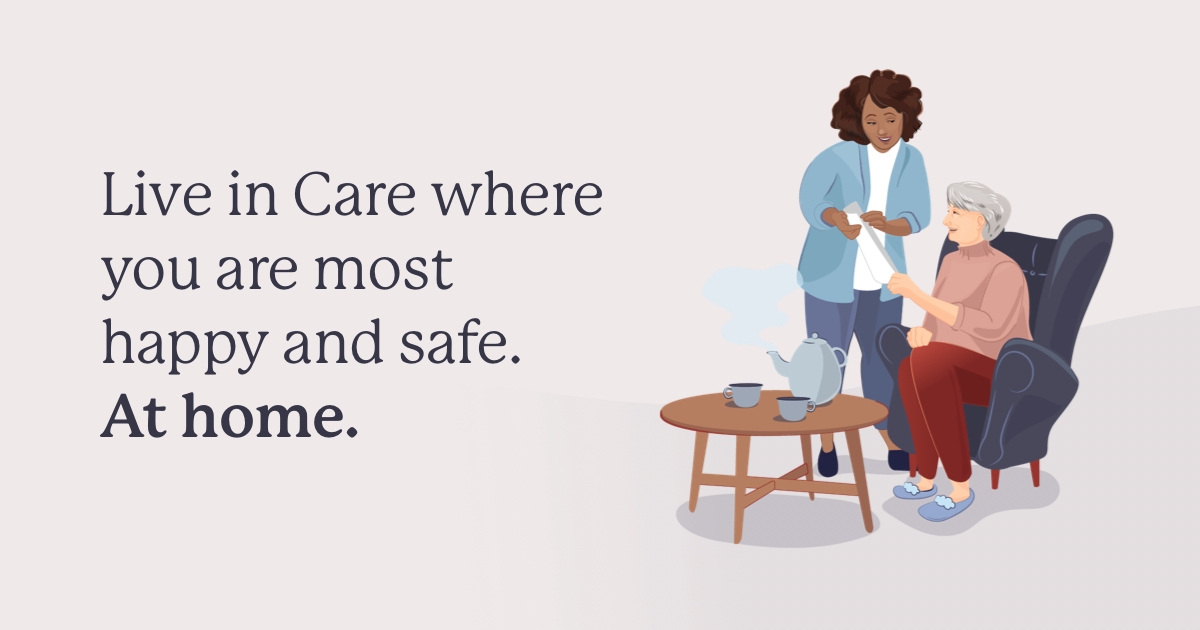 |
| Photo: The Live-In Care Company |
What is the cost of live-in care?
The total cost of care will vary by office and state and depends on the needs and complexity of the care plan. Please contact your local Griswold Home Care office for more information about Live-in care services.
What is included in live-in care?
Live-in care involves a caregiver living in the same home as your loved one. They are there to assist with activities of daily living, companion care, light duty housekeeping and incidental transportation where they can accompany your loved one to any appointments or social outings outside of the home as well. Please tell your local office everything that you would want a live-in caregiver to do so that they can provide a caregiver that matches those needs.
How many hours does live-in care cover?
Although live-in care plays out over a 24-hour service cycle, typically a caregiver is available for 16 hours of service or less, depending on meals and breaks, and also including 8 hours for sleep. If you are interested in traditional 24-hour around-the-clock care, caregivers typically cover shifts in 8-hour increments throughout an entire day to ensure that somebody is always awake.
Does live-in care cover 24-hour supervision?
Live-in care does not include 24-hour supervision. If the needs are so great that supervision is needed for all 24 hours in a day, you will want to consider the more traditional 24-hour awake care where a caregiver will be scheduled for 8-hour shifts to provide care and safety to you or a loved one.
Can live-in care be used in both short-term and long-term care circumstances?
Yes! Griswold Home Care can refer live-in caregivers for any length of time. We understand that there are times that a live-in caregiver is needed for only a few days as well as longer-term situations.
How can I pay for live-in care?
There are many ways to pay for non-medical home care. If you’re interested in more information about paying for home care, please check out our ways to pay for home care guide.
Can live-in caregivers assist in an independent living facility, nursing home, or other senior housing options?
Yes, they can! Thanks to our Anywhere Care Advantage, we can refer a caregiver to help wherever your loved one resides. This way you can be reassured that your loved one is receiving the care they need as well as the one-on-one attention they deserve, no matter their living situation.
What is included in overnight care?
Overnight care is when a caregiver is there a few hours before your loved one goes to bed, sleep over, and is available a few times during the night in case your loved one needs help. They are also there for a few hours when your loved one wakes up. This ensures that your loved one has the care they need during their overnight sleep. If your loved one does not need care during the day, but you prefer that a caregiver be there for them at night, overnight care may be the right fit for your needs.
With overnight care, the caregiver can only live in the home if there is a separate bedroom and storage space for their belongings. They must get 8 hours of sleep or at least 5 hours at a minimum.
| Does live-in care include overnight care? The answer is not as simple as yes or no. It will depend on the needs and habits of you or your loved one. Overnight care is specially designed to provide care for one who typically gets up frequently during the overnight sleep hours. This type of care provides you with peace of mind knowing that a caregiver is awake and available to support any needs when the sleep interruption occurs. Live-in care is designed to provide an agreed-upon number of care hours that also allows for 8 hours of sleep during a 24-hour cycle. If you or a loved when is awake at night and sleeps during the day, a caregiver can sleep during the same hours you or a loved one sleeps and be awake overnight for care support. However, for traditional overnight care coverage, Live-in care would need to be subsidized with an awake caregiver during the overnight hours. |
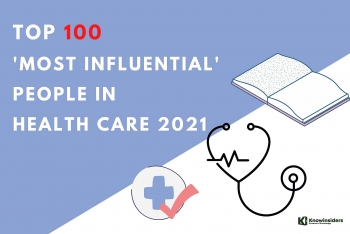 Top 100 'Most Influential' People in Health Care Top 100 'Most Influential' People in Health Care COVID-19 has remained a top healthcare priority for 2021, therefore many of the most influential people in the sector this year have been dedicating their ... |
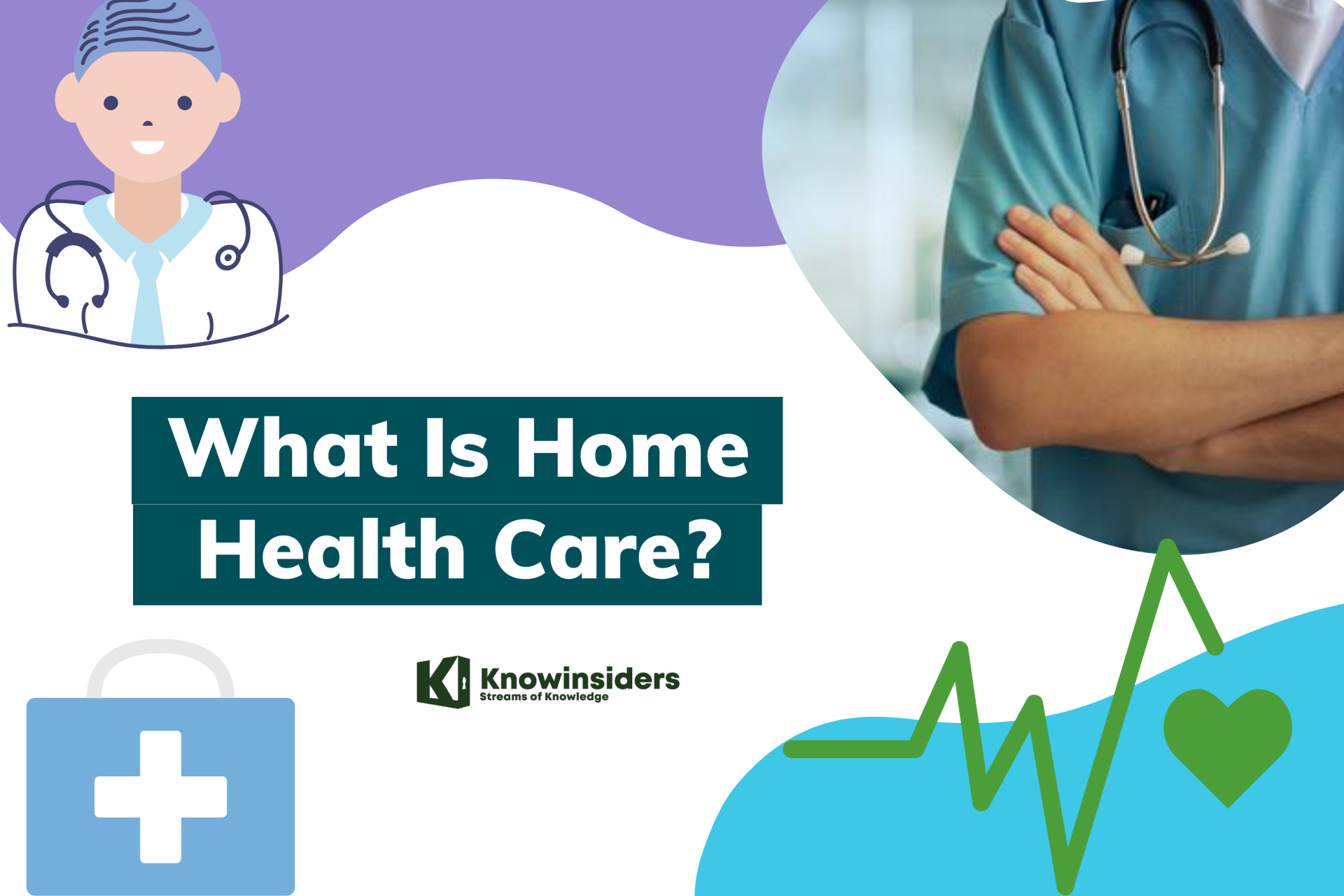 What Is Home Health Care: Benefits, Types, Services and Cost What Is Home Health Care: Benefits, Types, Services and Cost Are you searching for a home health care service? Home Health Care is beneficial for certain circumstances and limitless. |
 Best Steps To Start A Home Health Care Business Best Steps To Start A Home Health Care Business Looking to start your own home health care business? Read on to know what to do before starting your own home health care business! |























